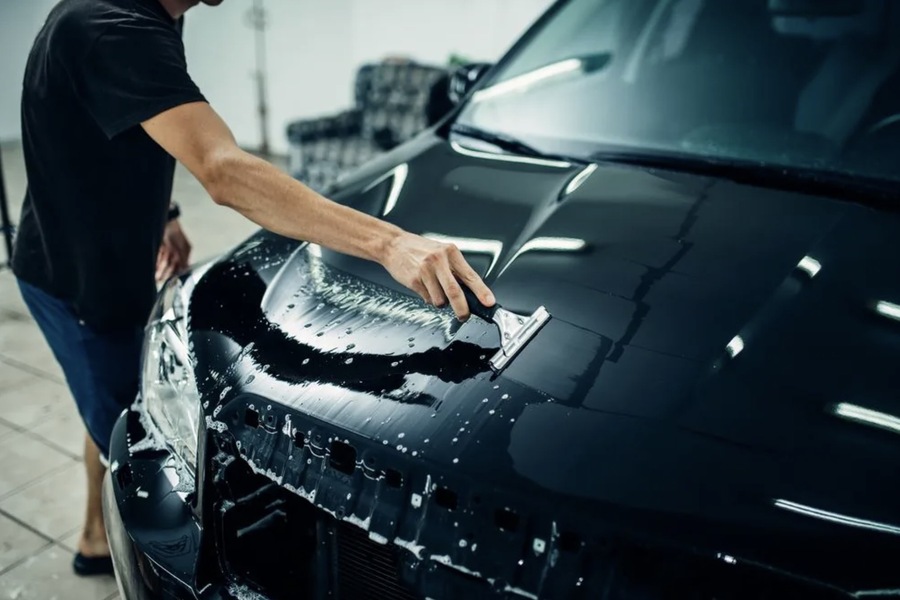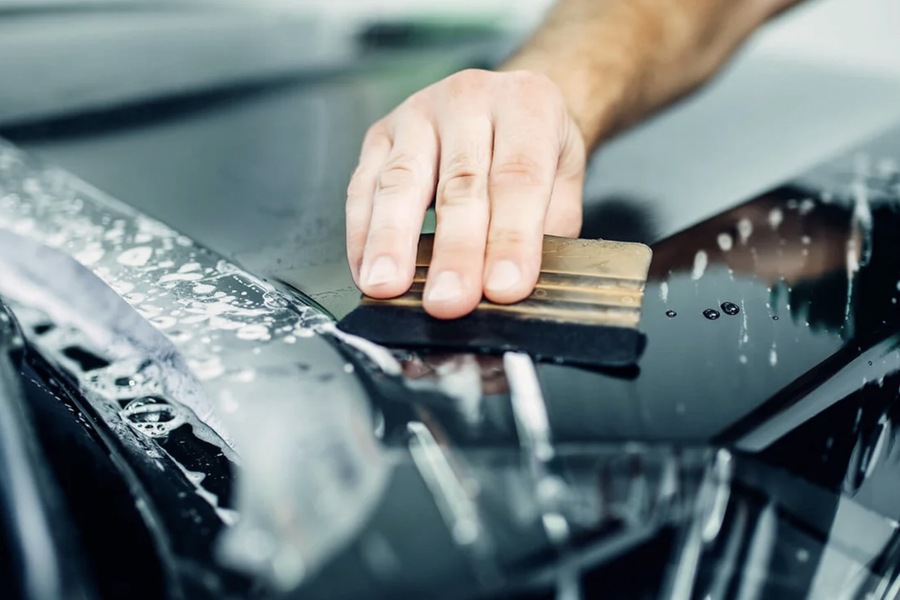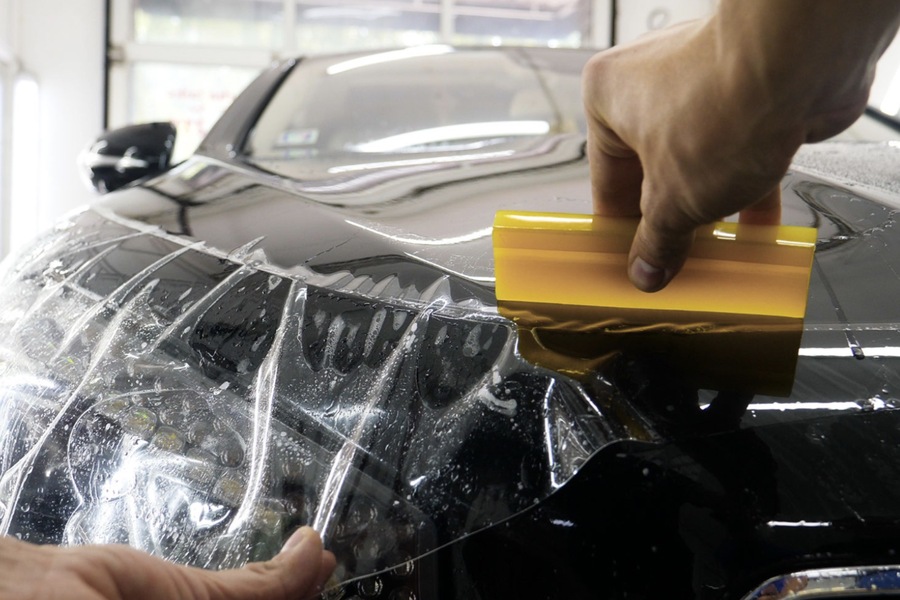
The Evolution and Benefits of Protective Film for Cars
In the world of automotive care, maintaining the pristine appearance of a vehicle is a top priority for many car owners. One of the most effective ways to achieve this is through the application of protective film. This transparent or colored coating, commonly known as paint protection film (PPF), adheres to the vehicle’s surface, providing a durable shield against various environmental and physical hazards without altering its aesthetic appeal. For expert application and reliable protection, companies like Ziebart offer top-tier services to ensure your vehicle remains in showroom condition.
Types of Protective Films
Protective films for cars come in several types, each offering unique benefits and levels of protection:
1. Vinyl (PVC) Films
– Composition: Made from polyvinyl chloride (PVC) with a thickness ranging from 50 to 200 microns.
– Protection Level: Provides basic protection against minor damage such as light scratches and stone chips.
– Durability: Typically lasts between 1 to 3 years under normal driving conditions.
Vinyl films are the most cost-effective option for car owners looking for basic protection. They are easy to apply and can be replaced relatively quickly. However, their thinner construction means they are not as durable as other types of films and may need to be replaced more frequently, especially if the vehicle is regularly exposed to harsh conditions.
2. Hybrid Films
– Composition: A blend of PVC and polyurethane, with thicknesses between 140 to 200 microns.
– Special Properties: May include hydrophobic properties and increased resistance to chemical reagents, depending on the brand.
– Longevity: Offers enhanced durability over standard vinyl films, combining flexibility and resilience.
Hybrid films represent a middle ground between vinyl and polyurethane films. They combine the affordability and ease of application of vinyl with the enhanced protective qualities of polyurethane. This makes them a popular choice for car owners who want more robust protection without the higher cost of full polyurethane films.
3. Polyurethane Films
– Composition: Made from thermoplastic polyurethane (TPU) with thicknesses ranging from 150 to 300 microns.
– Advanced Features: Known for hydrophobic properties, excellent chemical resistance, self-healing capabilities, and a brilliant shine.
– Longevity: Offers long-lasting protection, typically between 7 to 10 years with proper care.
Polyurethane films are considered the gold standard in paint protection. They provide the highest level of protection against physical damage, environmental contaminants, and chemical exposure. Their self-healing properties mean that minor scratches and abrasions can disappear on their own, maintaining the film’s clarity and effectiveness over time. Although they are more expensive, their durability and superior protection make them a worthwhile investment for many car owners.

Historical Development of Vinyl and Polyurethane Films
The development of protective films has a rich history, rooted in innovation and practical necessity:
Vinyl Film
– Origins: The precursor to modern vinyl films was adhesive tape, invented in the 1920s by Richard Gurley Drew of 3M. Originally designed to simplify painting tasks, it found a new application in the automotive industry.
– Automotive Use: In the 1960s, rally teams in Japan began using vinyl film to display driver names and numbers. This practical use caught the attention of advertisers, leading to widespread commercial use and a shift away from expensive airbrushing techniques.
The use of vinyl film in automotive applications marked a significant step forward in both practicality and marketing. By providing a simple and cost-effective way to apply graphics and advertisements to vehicles, vinyl film revolutionized how companies promoted their brands and how car owners could customize their vehicles.
Polyurethane Film
– Military Origins: During the Vietnam War, the US military sought a lightweight and discreet solution to protect helicopter rotor blades. 3M developed a polyurethane film that proved to be highly effective.
– Automotive Adoption: By the 1980s, polyurethane films were being used in NASCAR for advertising, and by the 1990s, this technology had become mainstream in automotive protection. Continuous improvements have made it a standard choice for many car manufacturers today.
The transition of polyurethane film from military to civilian use underscores its versatility and effectiveness. Initially developed for its protective qualities in demanding environments, it quickly became apparent that these same properties could benefit automotive applications. The adoption of polyurethane film by major automakers and racing teams further validated its effectiveness and reliability.
Benefits of Protective Film on Cars
Applying protective film to a car offers numerous advantages that enhance both the vehicle’s appearance and longevity:
– Extended Coating Lifespan: Protective films reduce the risk of paint corrosion and oxidation, especially in areas prone to abrasion.
– Mechanical Protection: Shields against minor impacts from stones, gravel, and other debris, as well as accidental scratches from everyday interactions.
– Chemical Resistance: Guards against harmful road chemicals, bird droppings, and other corrosive substances.
– Universal Application: Flexible and adaptable, protective films can be applied to any part of the car’s body, including complex curves and high-wear areas.
– Appearance Preservation: Maintains the vehicle’s glossy finish and original paint color, ensuring it looks new for longer.
– Long-Term Durability: Particularly with polyurethane films, protection can last up to a decade, offering significant long-term value.
Commonly Protected Car Parts
Protective films are typically applied to the following vehicle areas that are most susceptible to damage:
– Front Bumper: Absorbs impacts from stones and road debris.
– Hood: Protects against scratches and chips, particularly around the grille area.
– Optics: Shields headlights and taillights from abrasions, maintaining light output.
– Thresholds: Prevents damage from footwear and general wear.
– Side Mirrors: Guards against scratches from branches and parking mishaps.
– Door Handles: Protects the area under door handles from scratches caused by fingernails and keys.
– Loading Area, Trunk, Fenders, and Arches: Protects against sandblasting, abrasions, and scratches from loading and unloading items.
These areas are particularly vulnerable to damage due to their exposure to external elements and frequent contact. By applying protective film, car owners can prevent unsightly damage and maintain the aesthetic appeal of their vehicles.

Professional Application and Care
For optimal protection and longevity, it is recommended to have protective film applied by professionals. In Dubai, Ziebart is a renowned specialist in this field. With over 50 years of experience, Ziebart offers expert services in car protection, ensuring high-quality application and superior results. Their extensive knowledge and use of advanced materials make them a trusted leader in automotive care.
Professional application ensures that the protective film is applied smoothly and without imperfections. Specialists like Ziebart use precise techniques and tools to achieve a seamless fit, covering all vulnerable areas of the vehicle effectively. Additionally, professional installers can provide valuable advice on maintaining the film to ensure it continues to offer maximum protection over its lifespan.
Conclusion
The evolution of protective films for cars highlights the blend of innovation and practicality in automotive care. From their humble beginnings as adhesive tapes to the sophisticated polyurethane formulations available today, these films provide a robust defense against the elements while enhancing the overall appearance and longevity of vehicles. Whether safeguarding against stone chips on a daily commute or preserving the pristine finish of a cherished sports car, protective films offer peace of mind and ensure that your vehicle retains its showroom-quality appearance for years to come. Companies like Ziebart continue to lead the way in providing reliable and effective car protection solutions worldwide.

Biker, vegan, music blogger, Bauhaus fan and Guest speaker. Performing at the crossroads of minimalism and programing to create great work for living breathing human beings. Nothing ventured, nothing gained.